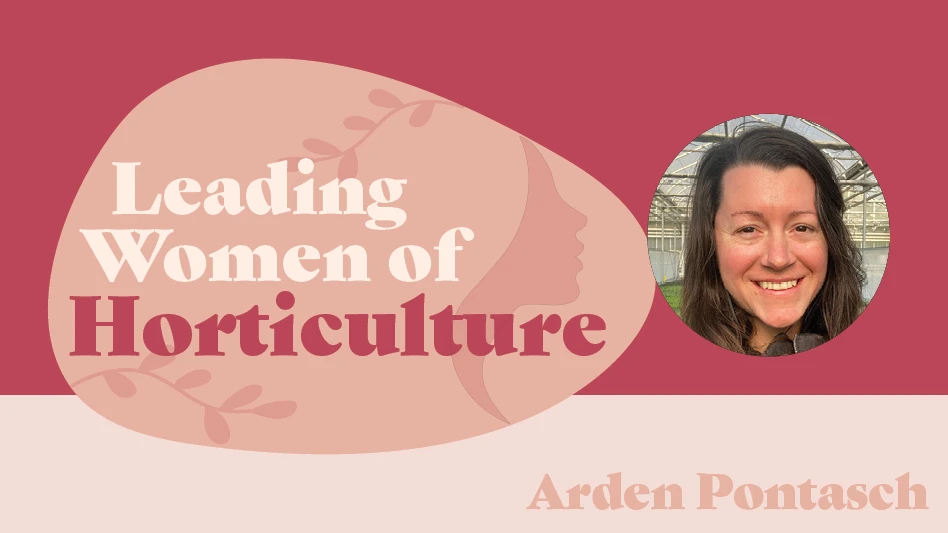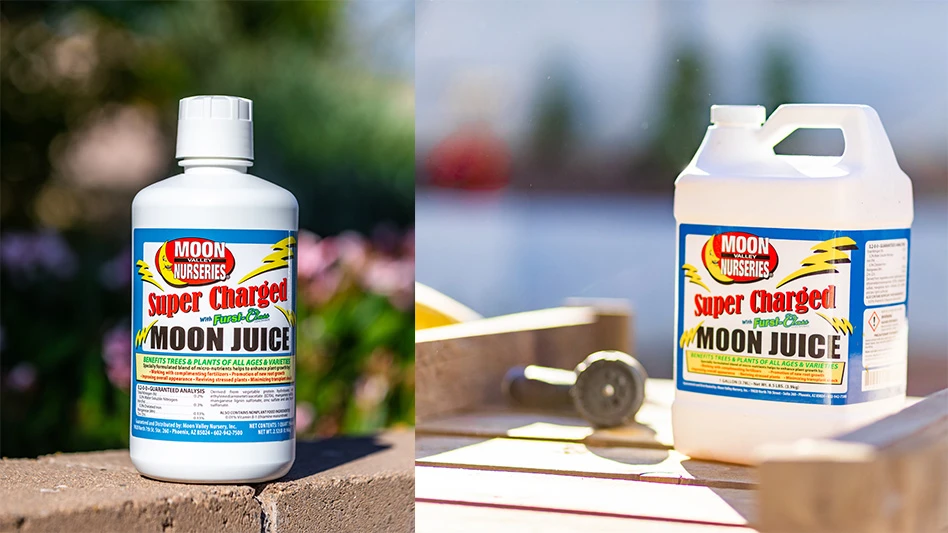 Matt Shultz, irrigation and plant health supervisor at Conard-Pyle’s Centreville, Md., location, checks a thrips trap. Photo by Kristen Nemeth
Matt Shultz, irrigation and plant health supervisor at Conard-Pyle’s Centreville, Md., location, checks a thrips trap. Photo by Kristen Nemeth
Matt Shultz, irrigation and plant health supervisor at Conard-Pyle’s Centreville, Md., location, nudged the nursery to take a calculated risk regarding pest control options.
Shultz, a sharp and attentive young nurseryman, took note of several things related to pests, from naturally occurring beneficials to the timing of certain pest damage in relation to plant growth cycles. Shultz thought back to his classroom days at West Virginia University where an entomology professor inspired him to embrace integrated pest management practices. Shultz approached his boss with the idea of releasing beneficial insects to control pests.
“I have a very open-minded boss at the farm, and I think without him this program would have never come to be,” Shultz said. “We both saw the potential of such a program, and he spoke to upper management about implementing it.”
But using beneficials in nursery production – at least on the East Coast – was somewhat uncharted waters, said John Rausch, vice president of operations at Conard-Pyle.
“We started out slowly, and did a small test run on a perennials crop with a fungus gnat problem. We were stunned by the results,” Rausch said. “Seeing the trial results got everyone on board, plus our customers thought it was a good idea, too.”
 Getting started
Getting started
For Shultz to make this work, he knew there would be a steep learning curve. Shultz knew scouting would be the backbone of this new approach to pest management at Conard-Pyle. Scouting is essential to an IPM program because to use biological control agents, growers must know the specific pests they are battling. Scouting also allowed Shultz to know which approaches worked and which ones failed.
“For this type of program to work, you must be flexible and constantly be observant of what’s going on in your nursery,” Shultz said. “We are farmers, and we need to listen, learn and use what Mother Nature provided for us.”
Developing a smart scouting program and keeping thorough records allowed the nursery to start building an informational database on its pest problems.
After implementation, the plant quality started to increase and the chemical costs decreased, Shultz said.
Prior to the beneficials program, chemical costs were high and there were some long REIs, Rausch said.
“We’ve taken five or six powerful chemicals out of our rotation and replaced them with beneficials,” he said. “Our short-term goal is applying what we learned in Maryland and using it on our Pennsylvania farm.”
Two-tiered approach
The biological portion of the program can be divided into two approaches.
The first is to be aware of the naturally occurring native beneficials and select products that will have minimal impact on them. When scouting, the growers look for pests and beneficials. If beneficials are present, like green lacewings or ladybird beetles, a pest treatment may not be needed.
If the beneficials can’t clean up the problem, a pesticide spray may be needed. Great care is given to the timing of pesticide applications to protect beneficials. By selecting a spray product that is “softer” on the beneficial, it may allow for new beneficials to move in quickly. Some of the neonicotinoid class of chemical controls that are compatible with Conard-Pyle’s biological program include Endeavour for aphids, Safari for scales and beetles, and Flagship for lacebugs, leafhoppers, whiteflies, mealybugs and fungus gnats in its perennial plant lines.
In addition to conserving its beneficials, Conard-Pyle also invites the good guys into the nursery by using PredaLure. It contains methyl salicylate, an herbivore-induced plant volatile that is encapsulated in a controlled-release packet. PredaLure attracts many beneficials like ladybird beetles, syrphid flies, minute pirate bug and many others.
 Conard-Pyle’s second approach is purchasing biological control agents and actively releasing them into the nursery. It is possible to release beneficials in the nursery, not just in an enclosed environment. Some of the beneficials Shultz releases include green lacewings, beneficial nematodes, predatory mites and parasitic wasps.
Conard-Pyle’s second approach is purchasing biological control agents and actively releasing them into the nursery. It is possible to release beneficials in the nursery, not just in an enclosed environment. Some of the beneficials Shultz releases include green lacewings, beneficial nematodes, predatory mites and parasitic wasps.Because several aphid species may be present, the grower uses Aphiline ace mix from Syngenta Bioline. It is a mixture of parasitic wasps, targeting a variety of aphid species. The product contains the parasites Aphelinus abdominalis, Aphidius colemani and Aphidius ervi. Extra releases also are made with A. ervi to specifically target the rose aphids.
Conard-Pyle plans to grow some crops using 100 percent biological control agents and only OMRI-listed (Organic Materials Review Institute) products by 2011.
For more: The Conard-Pyle Co., www.conard-pyle.com.
The author, a consultant specializing in integrating beneficials into traditional pest management programs, helped Conard-Pyle implement its biologicals program. See her columns every other month in Nursery Management & Production. Reach her at buglady@bugladyconsulting.com.
Kelli Rodda contributed to this story.

Explore the May 2010 Issue
Check out more from this issue and find your next story to read.
Latest from Nursery Management
- Society of American Florists accepting entries for 2025 Marketer of the Year Contest
- Sustainabloom launches Wholesale Nickel Program to support floriculture sustainability
- American Horticultural Society welcomes five new board members
- American Floral Endowment establishes Demaree Family Floriculture Advancement Fund
- The Growth Industry Episode 3: Across the Pond with Neville Stein
- The Growth Industry Episode 2: Emily Showalter on how Willoway Nurseries transformed its business
- March 2025 issue recap
- Gratitude as a marketing strategy





